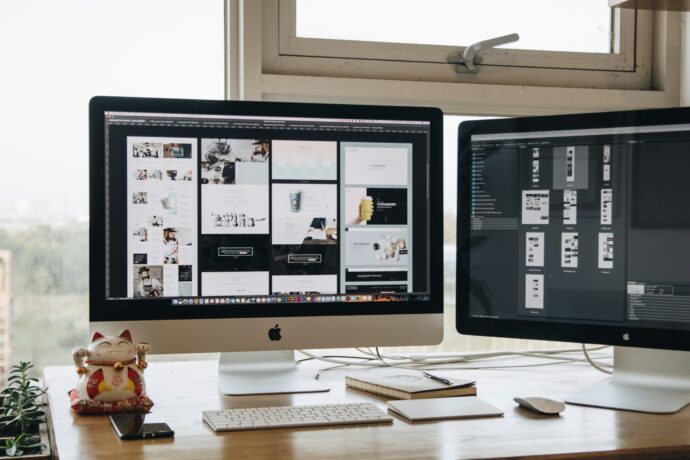In theory, a flawless interface sounds like a dream. In reality, chasing pixel-perfect results might be quietly dragging your projects and performance down.
Our CRO experts see this all the time. Let’s unpack why that is.
What Is Pixel Perfect Design?
Pixel perfect design is the pursuit of visual precision, right down to the last little line. Every element is meticulously aligned. Margins tweaked by a pixel. Breakpoints scrutinised like a crime scene. It’s a holdover from the print world and the early internet, when screen sizes were standard, control was high, and perfection felt possible.
These days, it’s more about making a final product match the design file exactly. No matter the device, browser, or user behaviour.
But here’s the question: at what cost?

Signs You’re Caught in the Pixel Perfect Design Trap
- Are projects getting held up over minor visual tweaks?
- Are deadlines slipping because “it’s not quite there yet”?
- Are teams stuck in endless debates over font, spacing, or alignment?
- Is usability getting sidelined for aesthetics?
- Are experiments on hold until the design is “final”?
- Do design discussions focus more on preference than performance?
- Are you rarely shown data to support design decisions?
- Are you hearing “I just feel it should be…” instead of “Users told us they want…”?
- Is more time going into polishing than testing?
If you’re nodding along, you may be realising that while pixel perfection has felt productive, that doesn’t mean it is.
Why We Obsess Over It
There is something satisfying about making things look just right. Pixel perfection offers a false sense of control. It’s measurable. It’s tidy. It’s… safe.
And when there’s no data to guide a decision, visual polish becomes the one thing everyone can agree on. But that instinct to keep tweaking is not always helping your users, or your, outcomes.
What Users Actually Care About
Here’s what your audience does notice:
- Slow load times
- Clunky navigation
- Confusing paths to purchase
- Content that’s hard to scan
- Pages that feel broken, even if they look beautiful
They won’t see a 2px misalignment, nor will they care what shade of green your button is. But they’ll feel every second of frustration when something doesn’t work. Focusing on the last 5% often means overlooking the 95% that matters more.
Why Pixel Perfection Doesn’t Scale
With so many devices, screen sizes, and user contexts, pixel perfection isn’t just impractical; it’s also impossible. It’s impossible. Worse still, when “perfect” becomes the goal, teams stop iterating. They avoid breaking things. They resist improvement. And that’s where performance flatlines. Your product should evolve alongside your users, not stay frozen in a Figma file.

So What Should You Aim For?
Swap “How polished is this?” for “How well does this work?”
- Prioritise usability over aesthetics
- Focus on clarity, not cleverness
- Test, don’t guess
- Let users, not opinions, drive decisions
Why Iterative Design and A/B Testing Win
Design shouldn’t be a one-shot attempt at brilliance. It should be a conversation with your audience. Here’s why fast, feedback-driven design works better:
- You test real ideas with real users at scale
- You lower risk by validating small changes before rolling them out
- You often find that small tweaks beat big redesigns
- You move faster (because feedback loops beat approval chains)
- You build on what works—data in hand
Even if you don’t have enough traffic for traditional A/B testing, there are smart ways to validate with qualitative methods.
TL;DR? Pretty Is Nice. Performing Is Better.
If you’re tired of projects stalling in polish purgatory, we get it. We help brands design experiences that are clear, tested, and conversion-driven without getting lost in the pixel weeds.Want to shift from “This looks nice” to “This actually works”? Let’s chat. We’ll help you test smarter, move faster, and turn pretty pictures into measurable growth.



